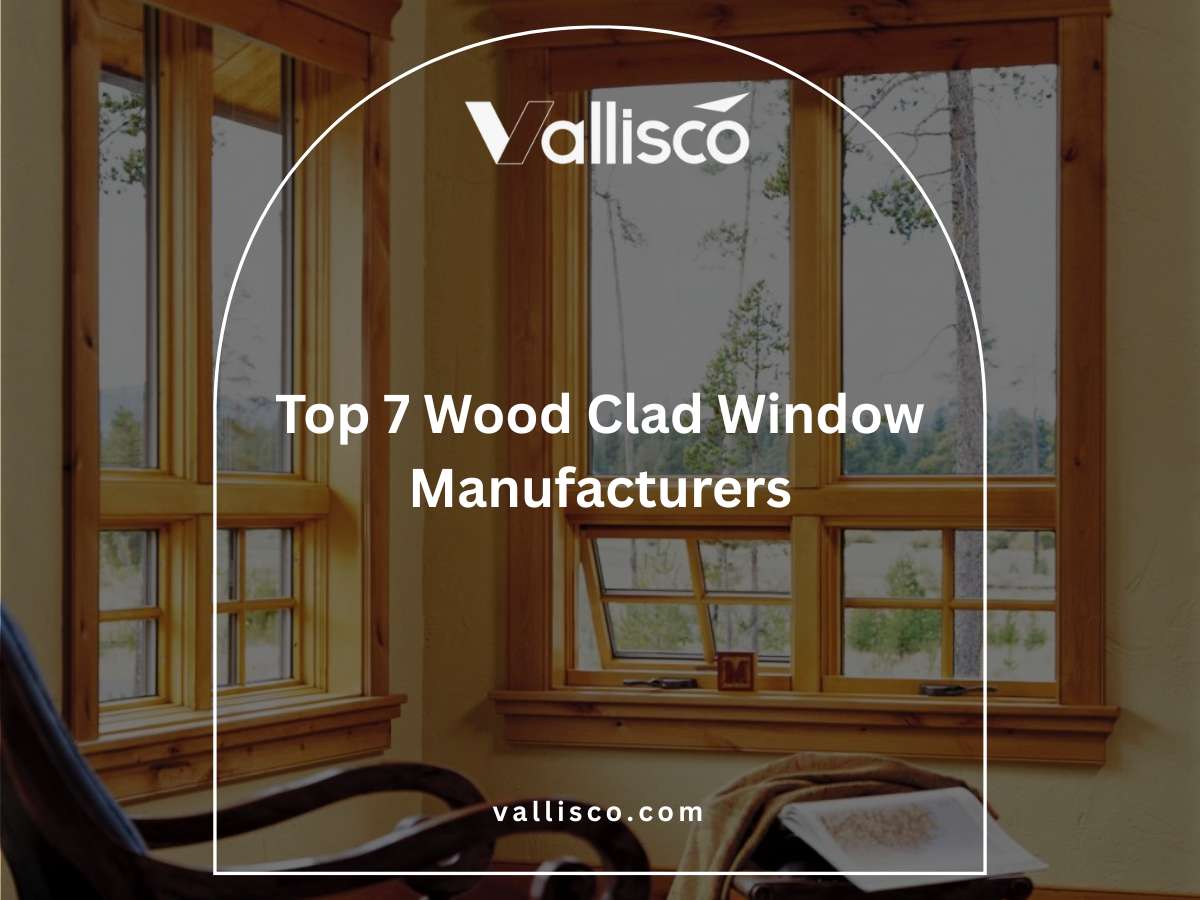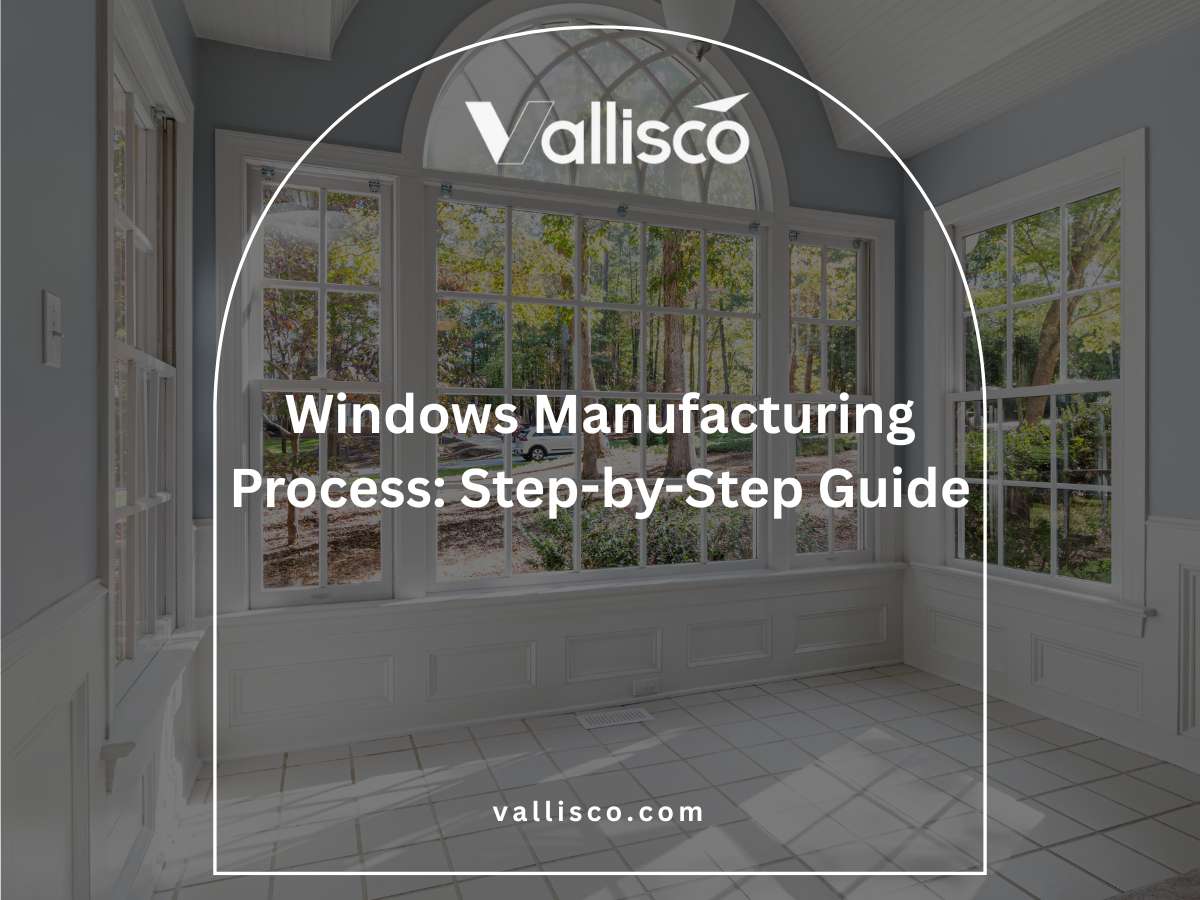I’ve worked on a few hotel renovation projects, and I noticed something that kept happening.
People would spend a lot of time picking tiles, lights, and fancy faucets. But they didn’t think much about the bathroom door.
That small detail? It turned into a big problem. Some doors opened the wrong way. Some didn’t fit. And some let in way too much noise right next to where guests were sleeping.
After seeing that a few times, I started paying more attention to door design from the very beginning.
In this article, I’ll show you 9 different bathroom door designs that actually work. Whether you want to save space, give guests more privacy, or avoid water damage, you’ll find real options that fit.
If you’re building or remodeling a bathroom for a home, hotel, or guest space this guide will help you choose the right door before it’s too late.
So let’s dive in!
Quick Comparison Chart
Need a fast way to see what fits your space, style, and budget? This chart gives you a side-by-side peek at all nine bathroom door designs before we break each one down.
| Door Type | Best Feature | Common Materials | Best Use Case | What to Watch Out For |
| Frosted Glass Door | Lets in light + maintains privacy | Tempered/frosted glass | Small bathrooms, modern homes, guest suites | Lower sound control, needs frequent cleaning |
| Sliding Barn-Style Door | Saves floor space | Wood, metal | Narrow layouts, rustic/villa settings | Needs wall clearance, low privacy |
| Flush Door with Veneer/Laminate | Clean look, budget-friendly | MDF, HDF, laminate/veneer | Hotels, budget builds, guesthouses | Swelling if not sealed, may lack durability |
| Bi-Fold Door | Folds to save space | PVC, composite | Powder rooms, compact spaces | Less soundproof, can wear quickly |
| Pocket Door | Disappears into wall, full access | Wood, glass, composite | Tight bathrooms, modern layouts | Requires early planning, hard to fix later |
| Paneled Wooden Door | Classic, solid, sound-blocking | Hardwood, engineered wood | Villas, upscale homes, master bathrooms | Heavy, needs sealing, higher cost |
| Aluminum-Framed with Louvers | Promotes airflow | Aluminum + glass/PVC | Utility spaces, tropical areas, greenhouses | Lower privacy, d |
1. Frosted Glass Door
A frosted glass door is made from safety glass that has a blurred or cloudy surface. It blocks direct visibility but still lets light pass through, which helps brighten the bathroom without giving up privacy. Some are fully frosted from top to bottom, while others only have a strip in the middle or top section. You can also choose framed styles using metal or wood to match different interiors, or go frameless for a more minimal design.
Key Benefits
- Brings In Natural Light: Frosted glass helps brighten bathrooms that don’t have windows. It’s a great way to make tight or dark spaces feel more open and inviting.
- Makes Spaces Feel Bigger: Since the glass reflects and shares light, even small bathrooms feel less cramped. This can help improve the guest experience, especially in compact hotel layouts.
- Fits Modern Interiors: The clean, soft look works well in villas, minimalist homes, and boutique-style accommodations. It feels thoughtful without being too bold.
I remember staying at a small B&B where every bathroom had a frosted glass door. I thought it would feel too open, but the space felt peaceful and private. The natural light made the whole room feel more welcoming.
Things to Consider
- Lower Sound Control: Compared to solid wood or heavy-core doors, frosted glass doesn’t block sound as well. This might be a concern if bathrooms are close to sleeping areas.
- Frequent Cleaning Needed: These doors tend to show water spots and fingerprints more easily. Keeping them clean takes a bit more attention, especially in high-turnover guest rooms.
- Choose the Right Glass: Look for tempered or laminated safety glass. These types are more durable and less likely to chip or crack in busy spaces.
Where It Works Best
- Guest Bathrooms with Low Light: Brightens the room by sharing daylight from nearby windows.
- Small En-Suite Hotel Rooms: Helps reduce the feeling of being closed in.
- Modern Homes or Villas: Pairs well with stone, tile, or natural wood finishes in stylish interiors.
Quick Tips Before You Install
Always choose tempered or laminated safety glass to avoid breakage. For less visible smudges, go with a matte or brushed metal frame instead of polished or glossy ones.
Frosted glass doors give you a mix of light, privacy, and a softer feel. If you’re working with small rooms or want a guest-friendly bathroom that feels open, they’re worth a serious look.
2. Sliding Barn-Style Door
A sliding barn-style door hangs from a track that sits above the doorway and runs along the wall. It slides open and closed instead of swinging, which saves space in tight areas. These doors are often made from wood or metal and come in finishes that match rustic, modern, or industrial designs.
The exposed track becomes part of the room’s style, not something you hide. That’s why many builders and property owners choose it when they want function and personality in the same detail.
Key Benefits
- Saves Floor Space: Because the door slides along the wall, you don’t need extra room for it to swing open. This works well in narrow hotel corridors, compact bathrooms, or guest suites where every inch matters.
- Adds Design Value: The hardware and track bring a bold, finished look. In villas and upscale B&Bs, this door can make the space feel warm or high-end without overdoing it.
- Feels Simple to Use: Sliding doors are easy to open, even for kids or older guests. You won’t have to worry about door clearance or swing getting in the way.
I worked at a small inn near a lakeside where we added barn-style doors for the guest bathrooms. They gave each room a cozy, custom feel and solved a space problem in one move. Guests loved the look, but the owners loved how well it worked.
Things to Consider
- Needs Clear Wall Space: You’ll need a clear wall beside the door for it to slide open fully. Outlets, towel hooks, or furniture nearby can get in the way.
- Less Sound and Light Control: These doors don’t close tightly. If privacy is a concern, they may not be the best fit for bathrooms next to sleeping areas.
- Track Must Be Strong: The top track needs to be mounted into a solid wall or backing. If it’s not stable, the door may shift or get noisy over time.
Where It Works Best
- Hallway Bathrooms in Inns or Hotels: Helps make tight layouts more usable.
- Villas and Homes with Style Themes: Works well with wood, stone, or industrial accents.
- Converted Spaces or Greenhouse Units: Great for repurposed rooms that need charm and practicality.
Quick Tips Before You Install
Check that the wall space beside the door is clear and wide enough for it to slide open completely. Add soft-close hardware and a floor guide so the door stays quiet and stable for daily use.
Sliding barn-style doors are more than a design choice. For the right space, they solve layout problems and bring in character that guests will notice. Vallisco offers sliding doors in the styles and finishes you need to match your project’s look and layout.
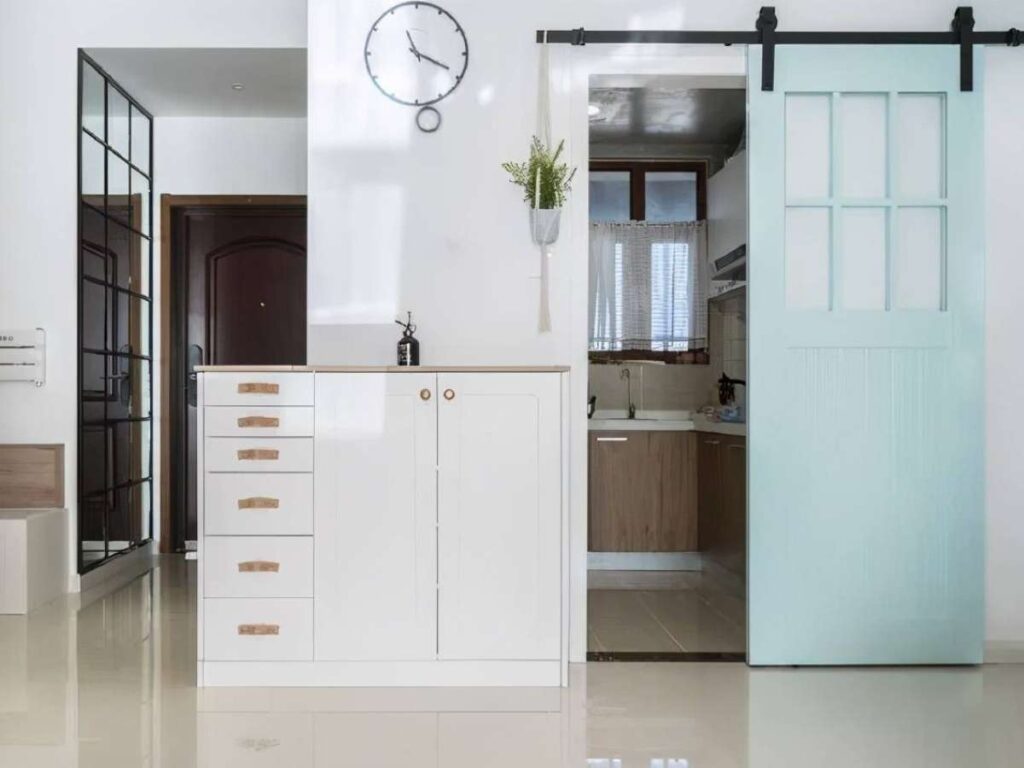
3. Flush Door with Veneer or Laminate Finish
A flush door has a flat, smooth surface with no panels or grooves. It looks clean and simple, which makes it easy to match with different interior styles. The core of the door is usually made of solid wood, MDF, or a composite board.
What gives it its look is the outer finish: either veneer, which is a thin layer of real wood, or laminate, which is a printed surface made to look like wood or other textures.
Key Benefits
- Matches Most Interiors: The clean surface helps it blend into both modern and traditional bathrooms. Whether you’re designing a hotel or a private villa, it won’t look out of place.
- Affordable and Easy to Maintain: Laminate finishes are less expensive than solid wood and easier to wipe down. For high-turnover places like inns or B&Bs, this can save you time and money.
- Looks More Expensive Than It Is: With the right color and grain pattern, a flush door with a good finish can look like real hardwood. Veneer options bring a more natural feel if you’re going for warmth.
One of the first hotels I worked on used laminate flush doors throughout the guest bathrooms. They were budget-friendly but looked neat and held up well with heavy use. The cleaning team appreciated that the surface didn’t stain or hold onto fingerprints.
Things to Consider
- Edge Sealing is Important: The sides of the door must be sealed properly to keep out moisture. Without it, the door may swell or peel over time.
- Not Built for Heavy Moisture: While laminate resists splashes, constant steam can wear it down. Use proper ventilation or avoid placing it directly next to the shower.
- Core Material Matters: Hollow-core doors feel light but may not last long. A solid or semi-solid core gives you better sound control and durability.
Where It Works Best
- Hotel Bathrooms with High Turnover: Easy to clean and replace if needed.
- Residential Bathrooms in Budget Builds: Gives a polished look without a high price.
- Guesthouses or Rental Properties: Good mix of style and durability at a fair cost.
Quick Tips Before You Install
Choose a waterproof laminate or seal the veneer well around the edges, especially near the bottom of the door. Always check that the core is suited for wet or humid zones if you’re placing it in a bathroom.
Flush doors with veneer or laminate finishes are a practical choice for real-world use. If you’re working with limited space, budget, or time, they can still deliver a clean, finished look guests will appreciate.
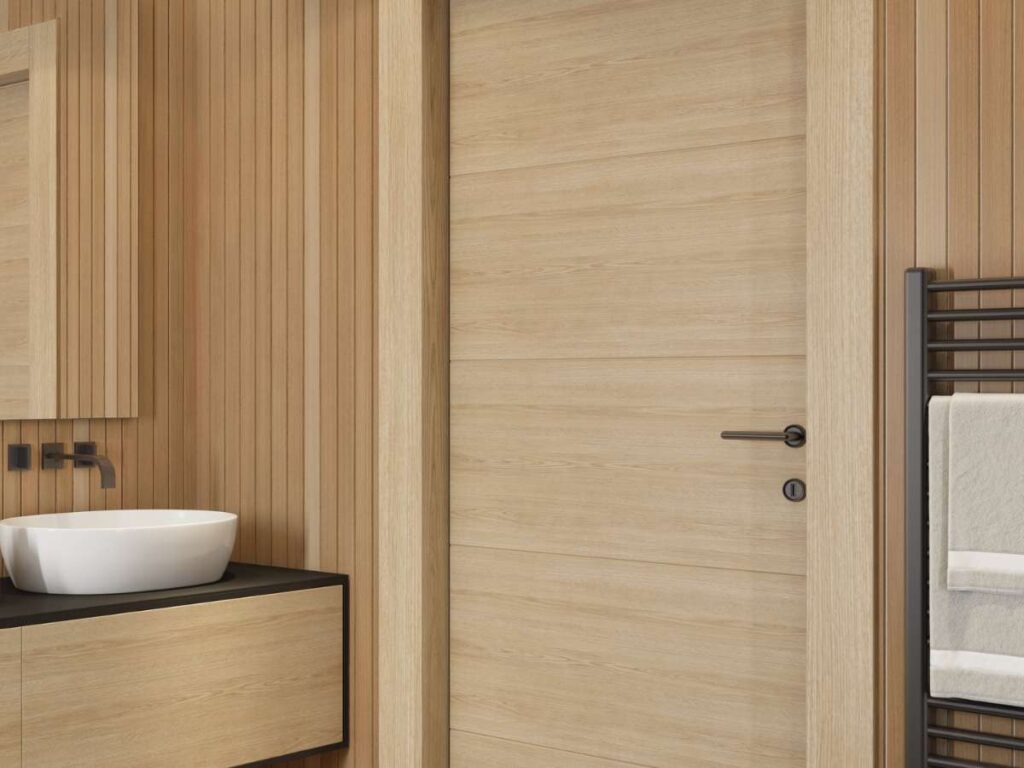
4. Bi-Fold Door
A bi-fold door is made of two narrow panels that fold in the middle when opened. The panels are connected by hinges and glide along a track, usually fixed at the top of the door frame.
Instead of swinging out into the room, the door folds neatly to one side. Most bi-fold doors are made from lightweight materials like PVC, composite wood, or aluminum, which helps them move easily.
Key Benefits
- Works Well in Small Bathrooms: Because it folds inward, this door is perfect for bathrooms with limited floor space. You won’t need to worry about the door bumping into vanities, sinks, or walls.
- Lightweight and Easy to Use: Most bi-fold doors are light and simple to open, which makes them a good option for children or older guests. The folding action feels smooth and doesn’t take up much effort.
- Fast and Budget-Friendly to Install: Compared to sliding or pocket doors, these are easier to fit and more affordable. That makes them appealing for short-term rentals or fast-paced hotel renovations.
I once helped furnish a compact guest room with barely enough space for a full swing door. We used a white PVC bi-fold instead. It looked basic, but it worked perfectly and freed up extra wall space for towel hooks. Sometimes, simple wins.
Things to Consider
- Lower Sound and Light Control: Since there’s no tight seal, bi-fold doors can let in sound or light. This may not suit all locations.
- May Feel Less Sturdy: The hinges and tracks can wear out faster with heavy use. In high-traffic hotels, you may need to check them more often.
- Needs Proper Alignment: If not installed level, the panels may drag or fold unevenly over time.
Where It Works Best
- Tight Guest Bathrooms or Powder Rooms: Makes small spaces feel less crowded.
- Budget-Friendly Hospitality Builds: Keeps costs low while staying functional.
- Utility or Staff Bathrooms: Practical choice for less visible areas with lower traffic.
Quick Tips Before You Install
Use rust-resistant hinges and tracks, especially in humid or coastal areas. Choose PVC or coated composite for better resistance to moisture and daily wear.
A bi-fold door may not be fancy, but it solves real layout problems. If you need something simple, space-saving, and fast to install, it’s a solid option that does its job well.

5. Pocket Door
A pocket door slides into a hollow space inside the wall when you open it. Instead of swinging or folding, it disappears completely out of view. The track is hidden inside the wall cavity, so the door stays flush with the surface when closed and fully hidden when open. Pocket doors often come in wood, glass, or composite materials, depending on the room’s style and moisture levels.
Key Benefits
- Saves Floor and Wall Space: Because the door slides into the wall, you don’t need extra clearance around the doorway. This makes it great for bathrooms with tight entryways or narrow layouts.
- Creates a Clean, Seamless Look: Since the door disappears into the wall, it gives the room a neat and open feel. It works especially well in modern or minimalist homes.
- Improves Flow in Small Spaces: In bathrooms where every inch matters, a pocket door makes movement easier. You won’t have to squeeze around swinging doors or awkward corners.
I remember helping a homeowner design a poolside guest bathroom with only one narrow wall. A pocket door was the only option that didn’t eat up room. It turned out clean, quiet, and surprisingly sturdy. No one ever guessed it was the budget choice.
Things to Consider
- Harder to Repair Later: Because the track is hidden inside the wall, fixing it after installation takes more effort. It’s best to use good-quality hardware from the start.
- Needs the Right Wall Type: Pocket doors work best in non-load-bearing walls. You also need enough wall width for the door to fully recess.
- Not Ideal for Fast Retrofits: Since the wall has to be opened up, it’s easier to plan a pocket door during early construction or remodeling.
Where It Works Best
- Compact Hotel Bathrooms: Makes the most of tight spaces with limited clearance.
- Villa Guest Suites: Blends nicely with modern interiors or hidden door layouts.
- Greenhouse or Modular Units: Ideal for small, multi-use spaces that need flexibility.
Quick Tips Before You Install
Use a soft-close or magnetic latch for a smoother feel and better privacy. Always test the wall cavity depth and make sure no plumbing or wires are in the way before installing.
A pocket door is one of the smartest ways to save space without giving up style. If you’re planning early and want a clean, modern finish, this option is worth strong consideration.
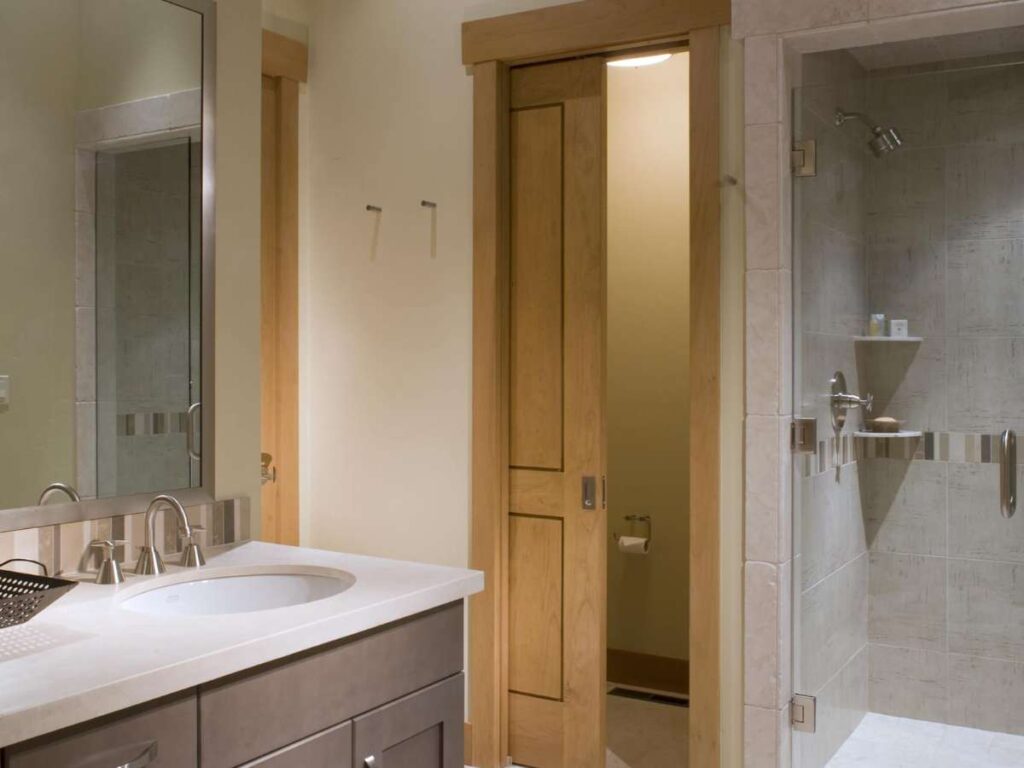
6. Paneled Wooden Door
A paneled wooden door has a solid frame with raised or recessed sections, called panels. These panels give the door depth and texture, making it feel traditional and sturdy. You can find them in one-panel, two-panel, or even six-panel styles, depending on how simple or decorative you want the door to look. Most are made from hardwood or engineered wood and can be painted or stained to match the space.
Key Benefits
- Feels Strong and Private: These doors are solid and heavy, which helps reduce noise and gives the bathroom more privacy. That matters in guest spaces where peace and quiet are part of the experience.
- Adds Classic Style: Paneled doors bring warmth and character to a room. They look especially good in homes or hotels with traditional or rustic designs.
- Can Be Refinished or Painted: If the style changes or the surface gets worn, you can repaint or refinish the wood. That gives the door a longer life.
One of the first villas I helped renovate used all solid wood paneled doors. The look felt rich and timeless. Even after a few years, the doors held up well with only minor touch-ups.
Things to Consider
- Needs Proper Sealing: Wood absorbs moisture, so it must be sealed to avoid swelling or cracking. Bathrooms with poor ventilation may not be ideal.
- Heavier Than Other Doors: The solid build adds weight, which means stronger hinges and hardware are needed.
- More Expensive Than Hollow Options: Real wood costs more, but it offers durability and a better feel over time.
Where It Works Best
- Large Bathrooms in Homes or Villas: Fills the space with a sense of warmth and weight.
- Upscale Lodges or Boutique Hotels: Matches classic interiors and high-end details.
- Master Bathrooms or Private Suites: Adds privacy and complements other natural finishes.
Quick Tips Before You Install
Use moisture-resistant wood types like teak or engineered wood, especially near wet areas. Repaint or reseal the door every few years to keep it looking fresh and protected.
Paneled wooden doors bring a sense of quality that guests and homeowners notice. If you’re looking for something long-lasting and full of character, this option is worth serious thought.
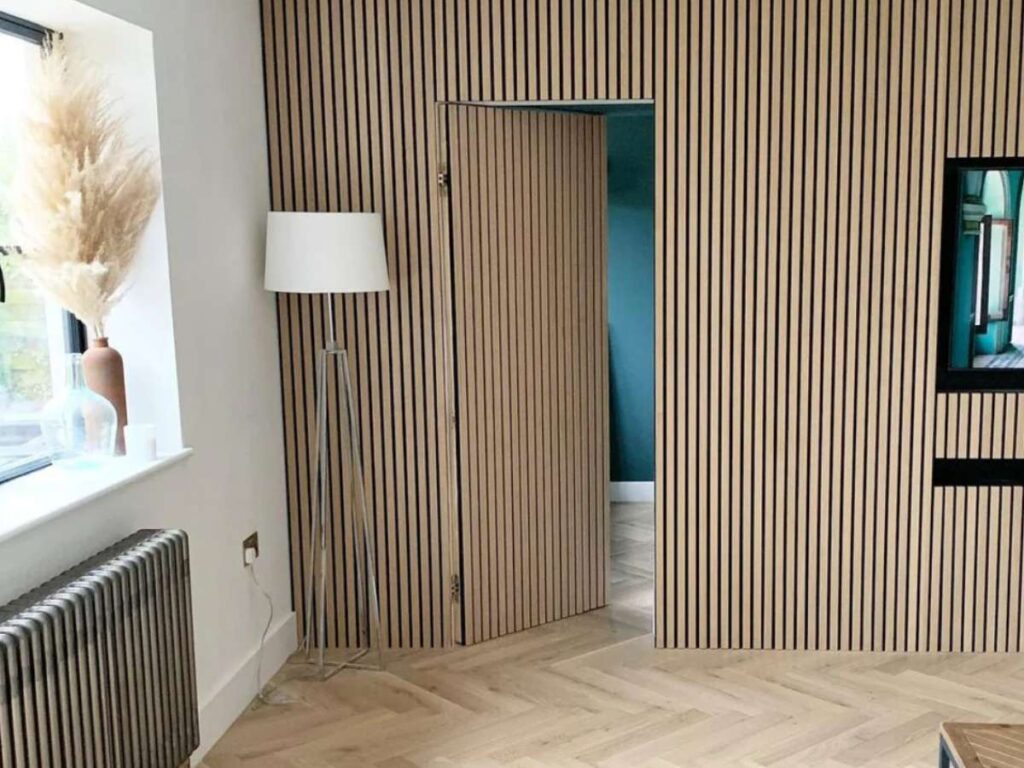
7. Aluminum-Framed Door with Louvers
An aluminum-framed door with louvers is built with a lightweight metal frame and has slats, or small angled openings, that allow air to pass through. These louvers can be fixed or adjustable and are often placed in the top or bottom half of the door. The panels around the louvers are usually made from frosted glass, PVC, or thin metal sheets. The overall look is clean and simple, but the function is what sets it apart.
Key Benefits
- Helps Bathrooms Breathe: The built-in louvers let steam and moisture escape, which helps reduce mold or damp smells. This makes them useful in rooms without exhaust fans.
- Long-Lasting in Humid Conditions: Aluminum doesn’t rust, and louvers made from PVC or glass hold up well in wet spaces. That’s helpful in coastal or tropical areas.
- Feels Lightweight and Practical: The slim frame makes the door easy to open and close, even in tight corners. It’s a good pick for utility spaces and staff-use areas.
A small hotel I once stayed at in the Philippines used these in every guest bathroom. The louvers kept the air moving, and the rooms felt fresher even without windows or fans. It was a small design choice that made a big difference.
Things to Consider
- Less Privacy Than Solid Doors: Louvers can let sound and light pass through, so they might not suit guest bathrooms in quiet areas.
- Not a Statement Piece: These doors are built more for function than for looks. They may not match high-end or decorative interiors.
- Louvers Need Cleaning: Dust and grime can build up between the slats over time. You’ll need to wipe them down regularly.
Where It Works Best
- Bathrooms in Tropical or Coastal Locations: Keeps the room ventilated naturally.
- Staff or Back-End Hotel Areas: Perfect for utility zones that need airflow.
- Greenhouse or Outdoor Shower Rooms: Great for semi-outdoor builds with limited power.
Quick Tips Before You Install
Position the louvers to face away from public spaces like hallways or guest rooms. This keeps the area private while still letting air flow through.
Aluminum-framed doors with louvers might not be the flashiest option, but they solve a real problem. If you’re dealing with heat, steam, or stale air, they’re a smart, low-maintenance solution.
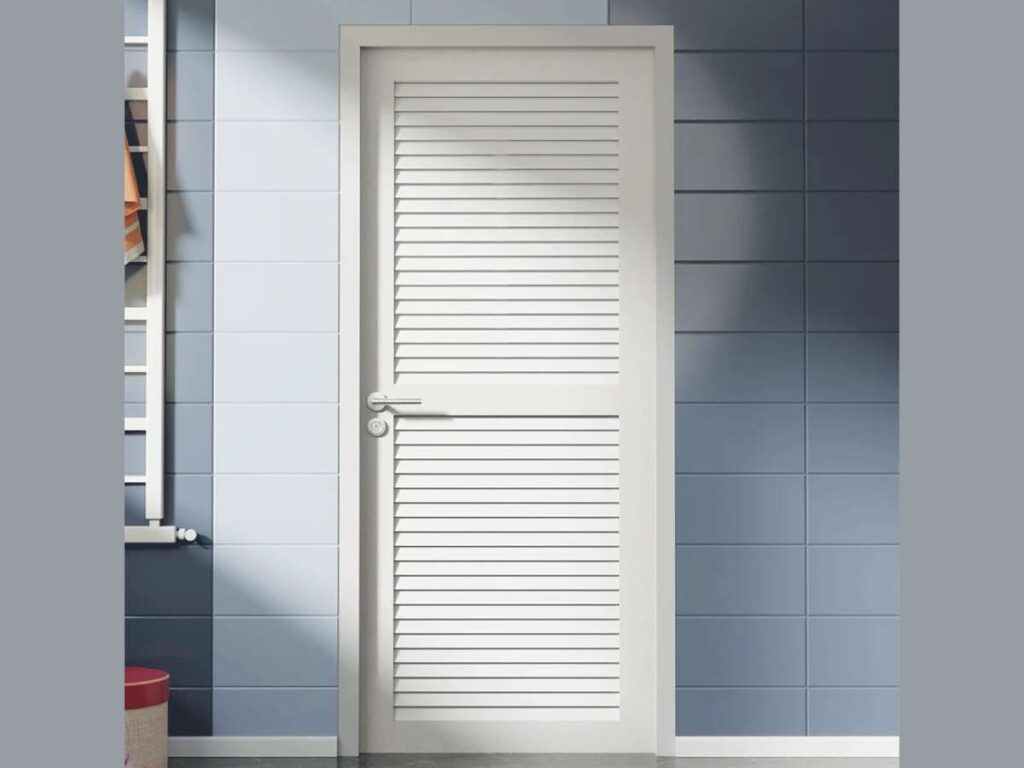
8. Glass and Wood Combo Door
A glass and wood combo door blends solid wood framing with one or more glass panels. The wood forms the structure of the door, while the glass adds light and style. The glass is usually frosted, textured, or tinted for privacy. Designs range from simple rectangular panels to custom layouts that highlight both materials. This type of door often feels balanced—warm from the wood and bright from the glass.
Key Benefits
- Adds Light Without Losing Warmth: The glass lets in natural light, while the wood keeps the door feeling cozy and private. This works well in homes or guest rooms where a soft, natural look is preferred.
- Bridges Classic and Modern Styles: The mix of materials fits many kinds of interiors. You can match the wood to rustic or traditional spaces, while the glass keeps it fresh and current.
- Feels Custom Without the Cost: You can get a designer look without going fully custom. Many suppliers offer ready-made models that still feel high-end.
I once helped furnish a countryside guest villa that used these doors in all the private bathrooms. Each one looked slightly different, but the mix of textures made every room feel warm and bright. Guests noticed the small details and loved them.
Things to Consider
- Must Be Sealed for Moisture: Both wood and glass can be damaged by water over time. Sealing the edges well helps the door last longer.
- Glass Placement Affects Privacy: Where the glass is positioned matters. A small frosted panel at the top lets light in without exposing too much.
- Weight Can Be an Issue: Solid wood and glass together can make the door heavy. You’ll need sturdy hinges and a strong frame.
Where It Works Best
- Bathrooms in Villas or Boutique Hotels: Adds charm and lets in soft light.
- Master Bathrooms or Guest Suites: Works well in private spaces with natural finishes.
- Homes with Wood and Stone Interiors: Complements earthy tones and cozy textures.
Quick Tips Before You Install
Use moisture-resistant sealant on all sides, including the frame and glass edges. Choose tempered or frosted glass to balance safety and privacy.
Glass and wood combo doors feel thoughtful and welcoming. If you want a bathroom door that brings in light while keeping the space grounded, this one checks both boxes.
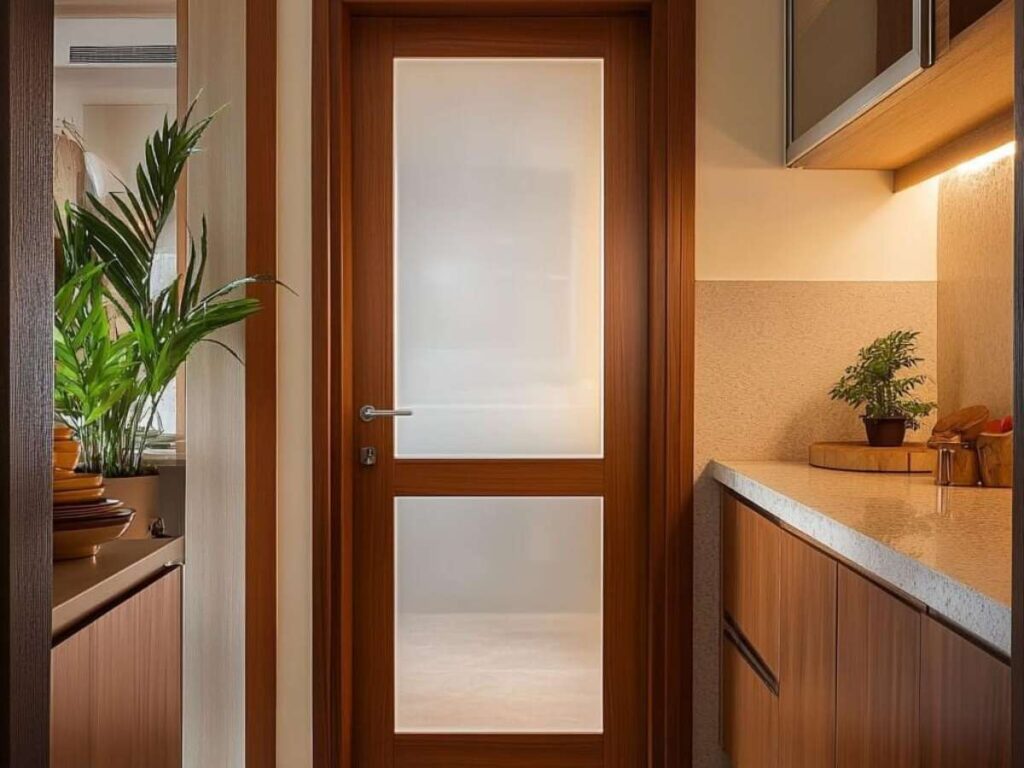
9. PVC Door with Embossed Design
A PVC door with embossed design is made from plastic (polyvinyl chloride) and has raised patterns or textures molded into the surface. The design can look like wood grain, geometric lines, or simple decorative panels. These doors are usually hollow-core, lightweight, and finished in bright or neutral colors. Even though they’re made of plastic, the embossed texture adds a touch of style to the plain surface.
Key Benefits
- Waterproof and Low Maintenance: PVC doesn’t absorb moisture, so it won’t swell, warp, or rot in damp areas. That makes it ideal for bathrooms with high humidity or no windows.
- Budget-Friendly and Easy to Replace: These doors cost less than wood or glass types. If one breaks or wears out, you can replace it quickly without affecting the rest of the space.
- Comes in Many Styles and Colors: The embossed finish adds a visual upgrade without adding cost. You’ll find plain, patterned, or wood-look versions that can fit different bathroom styles.
In one of our rental apartments, we used a PVC door with a simple raised panel look. It was affordable and lightweight, and even after years of use, it still looked fresh. For high-turnover units, this kind of door made sense.
Things to Consider
- Not as Strong as Other Doors: PVC can feel thin or bend easily if pushed too hard. This may not suit busy homes or hotels with heavy use.
- May Yellow Over Time: In areas with direct sunlight, the surface can fade or change color. Light-colored doors need extra care.
- Frame Must Be Sturdy: Since the door is light, a weak or wobbly frame can cause it to sag or shift.
Where It Works Best
- Budget Hotels or Guesthouses: Keeps renovation costs low while staying practical.
- Greenhouse Bathrooms or Outdoor Units: Handles moisture and weather well.
- Rental Units or Staff Bathrooms: Simple to clean and easy to replace when needed.
Quick Tips Before You Install
Check that the doorframe is firm and level before mounting. Choose a PVC door with a reinforced core if possible, especially for areas that get daily use.
PVC doors with embossed design won’t impress with luxury, but they’re dependable and smart for everyday use. If you’re focused on cost, speed, and moisture resistance, this type of door is worth considering.
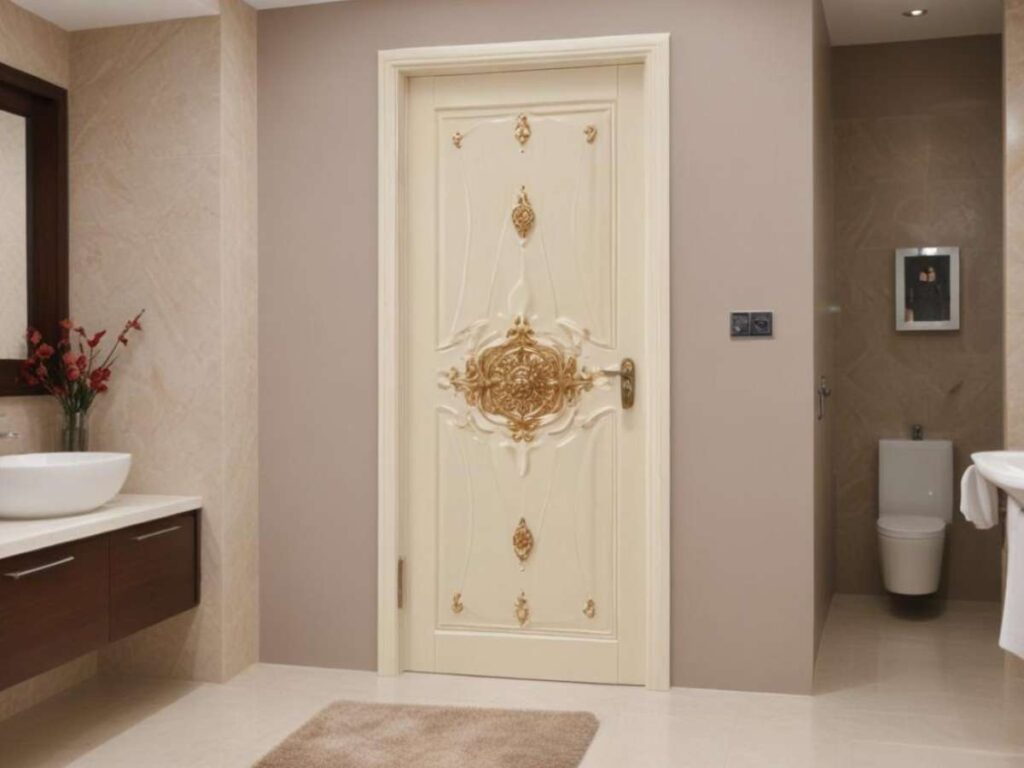
10. 5 Final Tips When Choosing Bathroom Door Designs
Before you settle on a bathroom door design, take a step back and think about how the space will actually be used. A good door doesn’t just look nice it makes the room more functional, comfortable, and easier to live with. Whether you’re working on a home, villa, hotel, or guest unit, these tips can help you make a smarter choice.
- Space Planning: The layout matters more than the style. In tight bathrooms, a swinging door might block the toilet, storage, or towel rack. Sliding, pocket, or bi-fold doors work better when space is limited.
- Moisture Resistance: Bathrooms stay damp, especially without proper ventilation. PVC and aluminum hold up well, while wood or veneer needs sealing and distance from direct moisture. I’ve seen wood doors warp after one rainy season in a coastal rental an issue that adds up if you’re managing multiple rooms.
- Privacy & Sound: If the bathroom is close to bedrooms or public areas, soundproofing becomes important. Solid core or flush doors block noise better than glass or louvered types. For light and privacy, frosted glass or wood-glass combos offer a good balance.
- Budget Fit: Some doors are budget-friendly, others are built to last longer. PVC is great for outdoor or utility units, while paneled wood suits higher-end spaces. In one building, we used PVC for service areas and solid wood for guest baths keeping costs down without losing quality.
- User Needs: A guesthouse, hotel suite, and private villa all have different demands. Think about who will use the door, how often, and what solves the daily challenges. The best bathroom door is the one that quietly works without needing constant thought.
If you’re looking for reliable bathroom door options across different styles and materials, Vallisco offers a wide range that suits both residential and hospitality projects.
Conclusion
That old guesthouse with the noisy, creaky door? I never forgot it and neither did the guests.
You don’t have to make that mistake. This article gave you the tools to compare designs, match materials, and find what fits.
From compact rentals to full-scale villas, these doors solve real-world problems.
So take the next step. Don’t wait until the last minute.
Reach out to Vallisco today. Let’s help you choose the right one.
Recommended Reads for You
Interested in more? Here are some additional articles with insights and tips to keep you informed:
Still haven’t found what you’re looking for? Don’t hesitate to contact us. We’re available around the clock to assist you.


